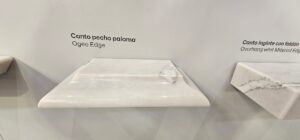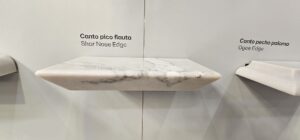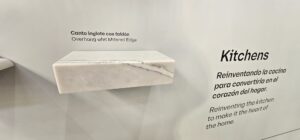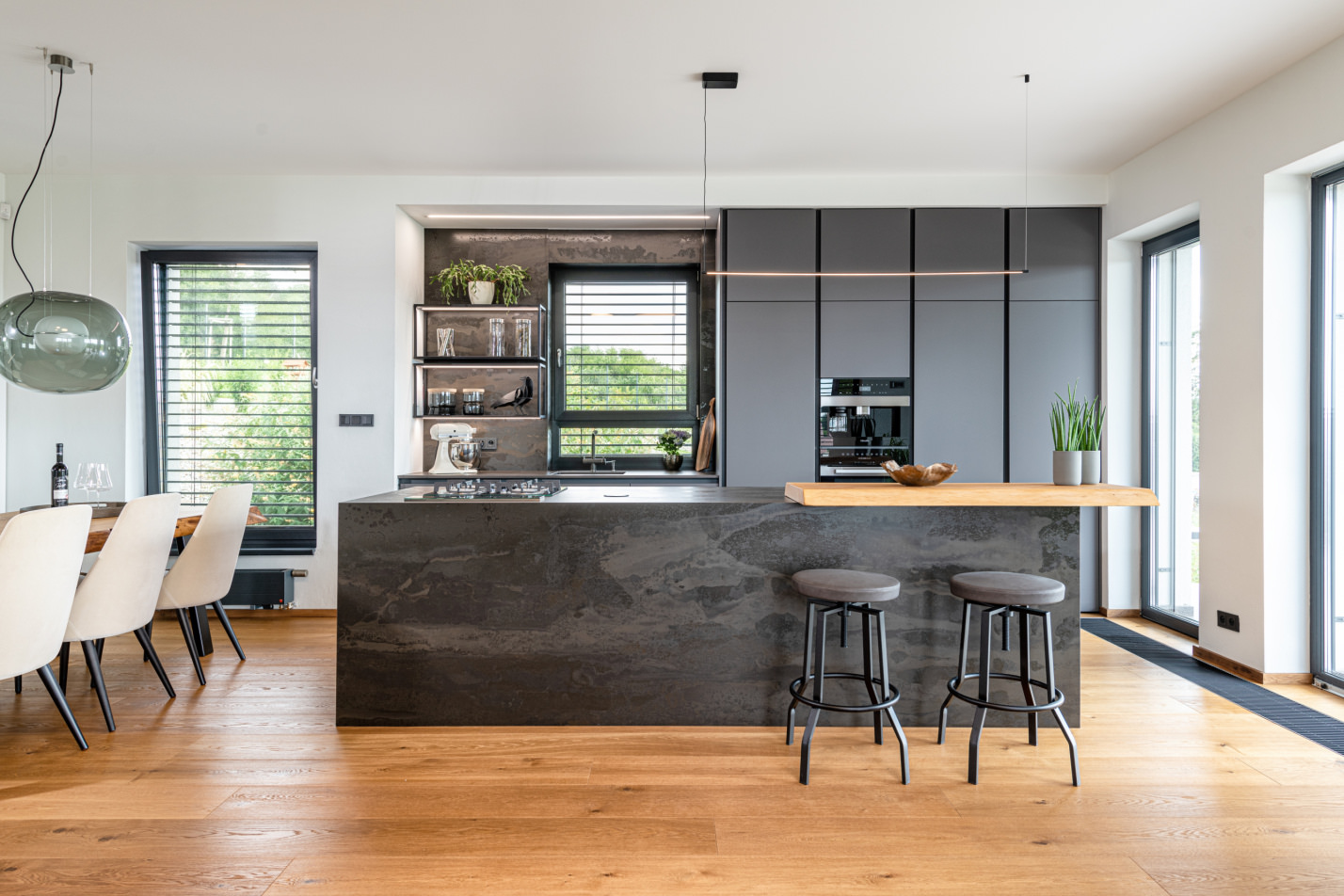Quartz or Granite ....that is the big question?
Quartz vs. Granite : A Comprehensive Comparison
When it comes to choosing a countertop material, two of the most popular options are quartz and granite. Both offer unique advantages and can greatly enhance the aesthetic and functionality of a space. In this article, we’ll break down the key differences between quartz and granite to help you make an informed decision.
Composition
Quartz:Quartz countertops are engineered using around 90-95% natural quartz combined with resins, pigments, and other materials. This makes quartz non-porous and resistant to staining.
Granite: Granite is a natural stone quarried from the earth and cut into slabs. It is composed primarily of minerals like quartz, feldspar, and mica, giving each slab a unique and natural appearance.
Appearance
Quartz: Offers a consistent, uniform look with a wide range of colour and pattern options, including those that mimic natural stones.
Granite:Features a more organic, natural pattern with unique veining and colour variations. No two granite slabs are identical.
Durability
Quartz: Highly durable and resistant to scratches, stains, and chips. Due to its non-porous nature, it does not require sealing.
Granite: Extremely durable and heat resistant but can be prone to staining and requires periodic sealing to maintain its resistance to liquids.
Maintenance
Quartz:Low maintenance; simply wipe with mild soap and water. No sealing required.
Granite:Needs regular sealing to protect against stains and bacterial buildup. Cleaning requires pH-neutral cleaners.
Cost
Quartz : Generally more expensive than granite due to the manufacturing process.
Granite : Pricing varies widely based on rarity and quality, but it can be more affordable than quartz in some cases.
Environmental impact
Quartz: Manufactured, which can lead to environmental concerns related to resin and processing.
Granite: A natural stone but requires significant energy for quarrying and transportation.
Final Thoughts:
Both quartz and granite have their own sets of pros and cons, making the choice largely dependent on personal preference, budget, and lifestyle. Quartz offers consistency and low maintenance, while granite provides natural beauty and uniqueness. Consider your priorities and desired aesthetics to make the best choice for your space.
The Benefits of Choosing a Quartz Worktop.
When selecting a kitchen or bathroom worktop, quartz is one of the best choices available. It combines durability, beauty, and low maintenance, making it a popular option for homeowners and designers alike. Here are some key benefits of choosing a quartz worktop:
1. Durability and Strength
Quartz is an engineered stone made from natural quartz crystals combined with resins and pigments. This makes it incredibly strong and resistant to scratches, stains, and chips, ensuring longevity in busy kitchen environments.
2. Low Maintenance.
Unlike natural stone surfaces like granite or marble, quartz is non-porous. This means it doesn’t require sealing and is resistant to bacteria, moisture, and stains. A simple wipe with soap and water is enough to keep it looking pristine.
3. Aesthetic Appeal
Quartz worktops are available in a wide range of colours and patterns, including options that mimic natural stones like marble and granite. Whether you prefer a sleek modern look or a more traditional design, quartz offers styles to suit any décor.
4. Hygienic and Non-Porous.
The non-porous nature of quartz prevents the absorption of liquids and bacteria, making it an ideal choice for food preparation areas. This makes it a more hygienic option compared to porous materials like wood or unsealed natural stone.
5. Resistant to Stains and Spills.
Quartz resists common household stains from coffee, wine, oil, and acidic foods, making it a worry-free surface for kitchens. Its resistance to discolouration ensures long-lasting beauty.
6. Eco-Friendly Option.
Many quartz worktops are made using recycled materials, making them a sustainable choice for environmentally conscious homeowners. Additionally, their long lifespan reduces the need for replacements, minimizing waste.
Conclusion:
A quartz worktop is a fantastic investment for any kitchen or bathroom. Its durability, low maintenance, and aesthetic versatility make it a practical yet stylish choice. Whether you're renovating your home or designing a new space, quartz offers a perfect blend of functionality and elegance.
How to choose the edge of your Quartz worktop?
When selecting a quartz worktop, the edge profile is an important design element that influences both aesthetics and functionality. The edge shape can complement your kitchen’s style, enhance safety, and impact durability. Here’s a guide to choosing the right quartz worktop edge for your space. 1. Consider Your Kitchen Style The edge profile should match the overall look of your kitchen:
Modern & Minimalist:
Square or beveled edges create a sleek, contemporary feel. Classic & Traditional: Ogee or bullnose edges add a timeless, elegant touch. Rustic & Farmhouse: A chiseled edge provides a natural, handcrafted appearance.
2. Think About Safety If you have children, rounded edges like bullnose or half-bullnose reduce the risk of injury compared to sharp, square edges.
3. Balance Durability & Maintenance
Square edges are prone to chipping at the corners, so if durability is a priority, a slightly rounded edge like an eased or beveled profile is a better option. Intricate edges, such as ogee or waterfall, may require more cleaning as they can collect dust and debris.
4. Budget Considerations
Standard edges (square, eased, or beveled) are typically included in the price of the quartz slab, while more detailed designs (ogee, mitered, or laminated) may come at an extra cost due to additional fabrication work. Popular Quartz Worktop Edge Profiles Square: Sharp and modern, but prone to chipping. Eased: A softened version of the square edge for better durability. Beveled: A slanted edge for a subtle decorative touch. Bullnose: Fully rounded for safety and a classic look. Ogee: A stylish, layered curve for an elegant finish. Mitered: Creates a seamless thick-edge look, great for luxurious designs. Chiseled: A raw, natural edge for a bold statement. Final Thoughts Your quartz worktop’s edge profile is more than just a finishing detail—it impacts both function and style. Consider your kitchen’s aesthetic, your household’s needs, and your budget before making a choice.
A well-chosen edge will enhance the beauty and longevity of your quartz worktop.
Polished Straight Edge

Polished Round Edge Polished

1/4 Round Edge Ogee Edge

Shark Nose Edge Polished

1/2 Round Edge

Overhang with Mitred Edge



